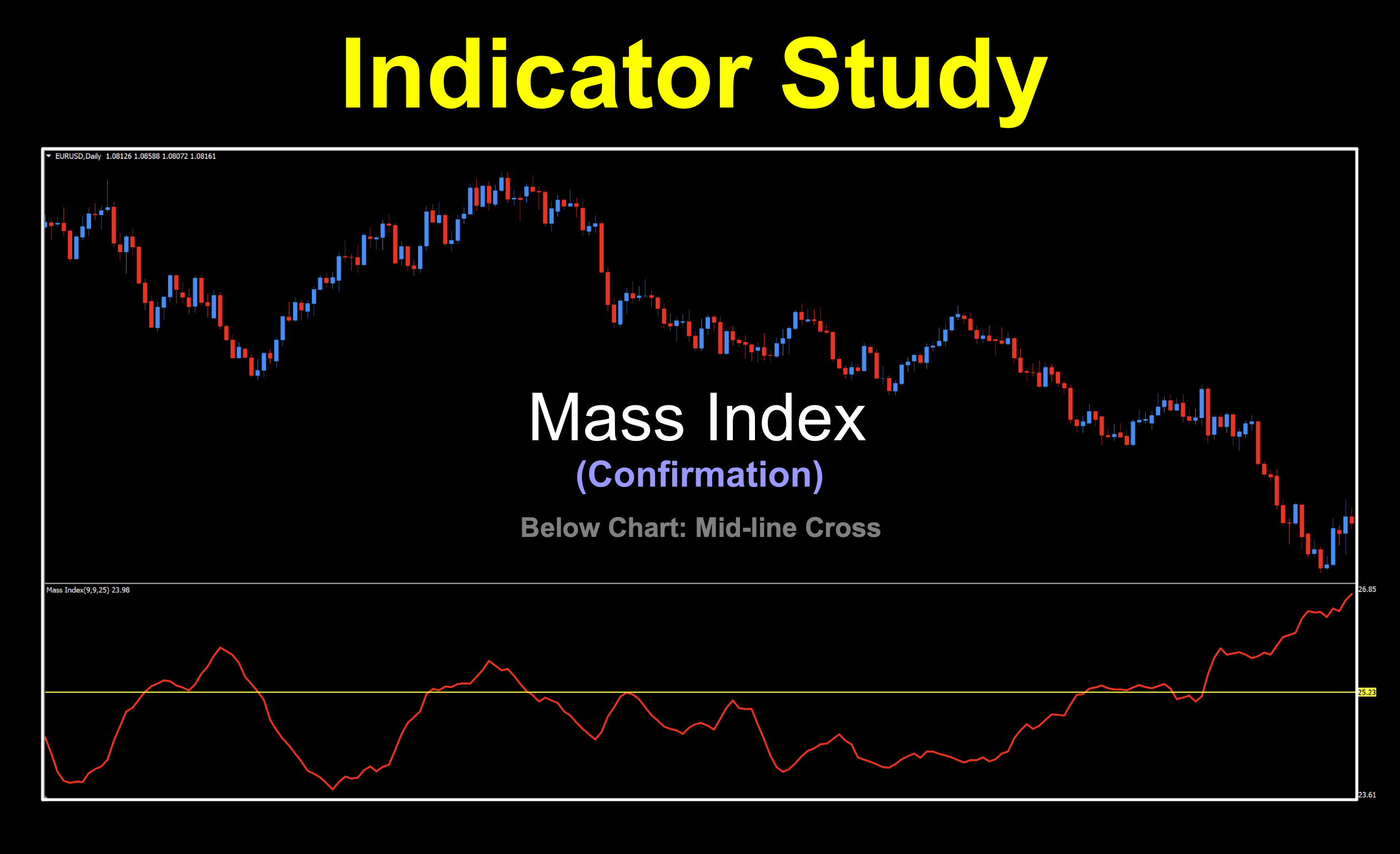What, Again?
Have you ever run into a friend more than once in a very short time? We have, and it was totally unanticipated and completely by accident. Scouts honor. But, it’s a good thing. But this time, the guy who came up with the idea isn’t putting his name on the indicator. I mean, how many can you name after yourself, right? But it’s got a cool sounding name anyway. Let’s go find out if it’s cool enough to sit at the cool kid’s table.
Language
When we researched this indicator, we read a lot of language alluding to “approaching trend reversals”, “market forecasting”, and something called a “reversal bulge”. That’s all well and good, but as we’ve said in the past, trying to forecast anything, especially when it comes to trading, is really just a guess. Sure, you may be fortunate, and it goes your way, but the market is going to do what it does. It doesn’t mean you forecasted anything. Does that mean an indicator using this language doesn’t have any use to us? It sure does. Let’s take a peek at this indicator in action and then get back to the rest of the story.
Who’s the Friend
We wanted to mention that this week’s implementation comes from a guy who we just talked about not too long ago. You may remember him, because we highlighted his namesake indicator. The man, the myth…none other than Donald Dorsey. The indicator evolved from a 1992 article in Technical Analysis of Stocks & Commodities magazine. It was his own variation of something called “Range Oscillation Analysis” which describes how much price ranges, or how much price moves up and down, oscillates over time. The indicator we’re going to use was coded in 2011. Let’s see what makes it tick.
Components
Let’s pull back the curtain on this indicator and see what’s inside the box. There are three components;
- The first moving average is an exponentially smoothed moving average of the daily close.
- The second moving average is the first average smoothed a second time.
- The index is a 25-day moving sum of two moving averages.
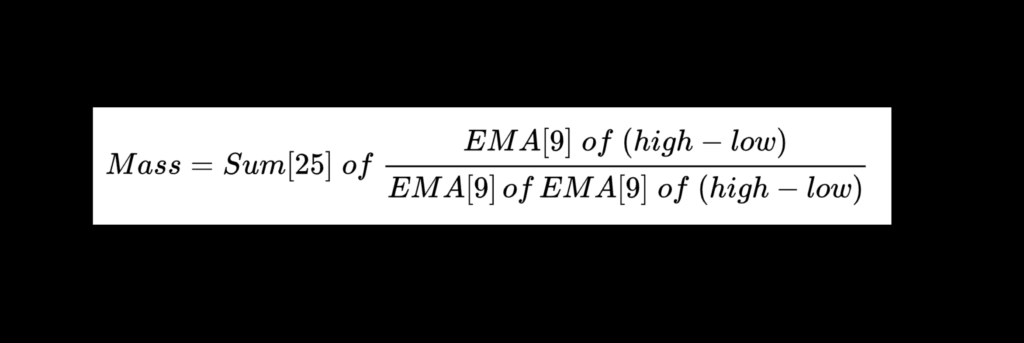
No special magic. Just a way to identify momentum, which in turn provides us a signal to consider a trade. And, that signal comes to us as a mid-line cross. We’re going to address that a little further in this blog.
Red Hots
Now that we’ve got the formalities out of the way, let’s go look at the chart and see what this red darling does. It’s nice and simple, and it has a couple of extra lines in the default settings, which we’ll be changing out for something more simple. Don’t be confused. We’ll walk you through it. In the meantime, this is what it looks like out of the box. We just changed the signal line from blue so it doesn’t look like an ATR indicator.
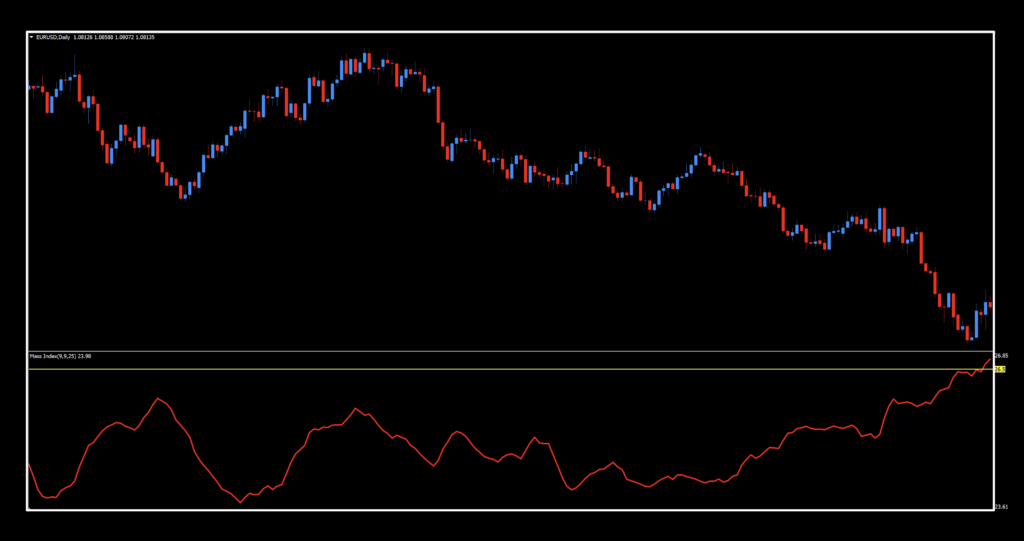
Change Matters
Before we get into the settings, we’re going to be making one change. We will be removing the two pre-populated levels in the default settings and replacing it with a midline. Those two levels are 26.5 and 27 and our replacement line is the average between the upper and lower boundaries. In the case of our example, the upper boundary is 26.85 and the lower, 23.61, making the mid-point; 25.23.
Boundaries
The boundary values do change a little over time provided the SumPeriod (25) remains the same, but if you do change that variable, then the boundaries will change and adjustments will be needed. We’ll get to that as well. Let’s get back to what our chart looks like with the new mid-line. It looks like this.
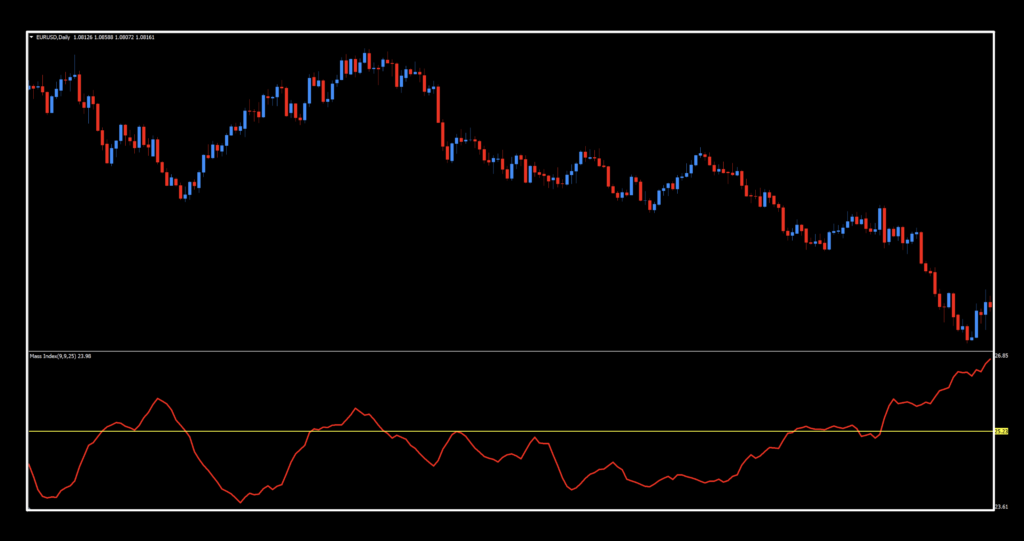
Not great at first glance, but that’s why we have settings at our disposal to find a better combination. But, before we get into that, let’s go look at the settings.
Settings
Now that we’ve got the colors and mid-line on the chart where we want them, let’s take a quick look at the settings. They’re pretty straight forward.
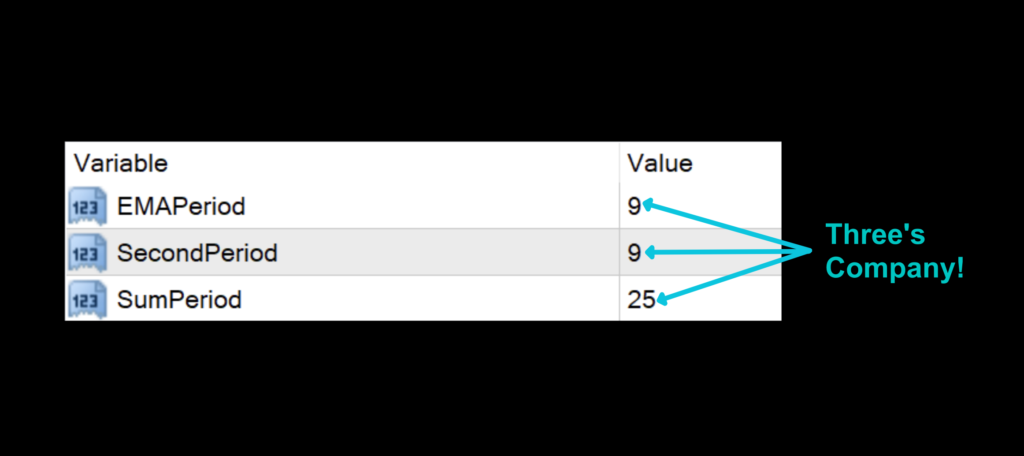
EMAPeriod: The first exponentially smoothed moving average of the daily close. The default value is 9.
SecondPeriod: The first average smoothed a second time. The default value is 9.
SumPeriod: A moving sum of two moving averages. The default value is 25.
Advantages
* From the mind of a guy we know and love.
* Easy to identify signals.
* Simple to adjust using basic momentum tools.
How we use it.
One of three actions need to happen in the last 30 minutes prior to the close of the trading day. They are; opening, maintaining, or closing, a position. This is when you make your trading decisions, and not actually wait for the close at 1700 EST, because we trade on the daily time frame.
Long: When the signal line crosses above the mid-line. Entry is in the last 30 minutes of the trading day.
Short: When the signal line crosses below the mid-line. Entry is in the last 30 minutes of the trading day.
Whatever, Never mind
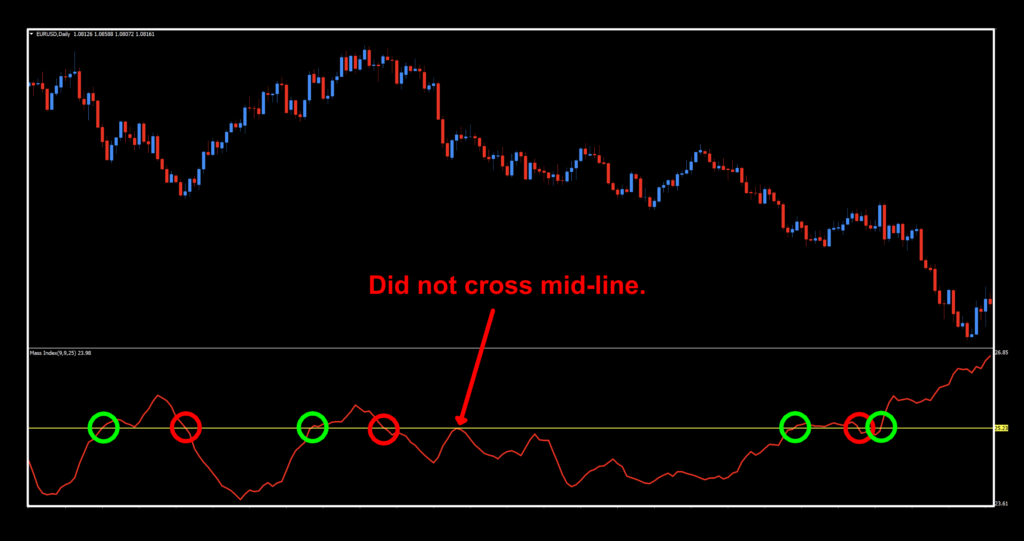
Let’s go back into the settings, specifically the SumPeriod. The default value is 25 which forms our boundaries. This value tells the formula how many periods to apply the calculations. So if we were to change it to 14, for example, our chart would look like this.
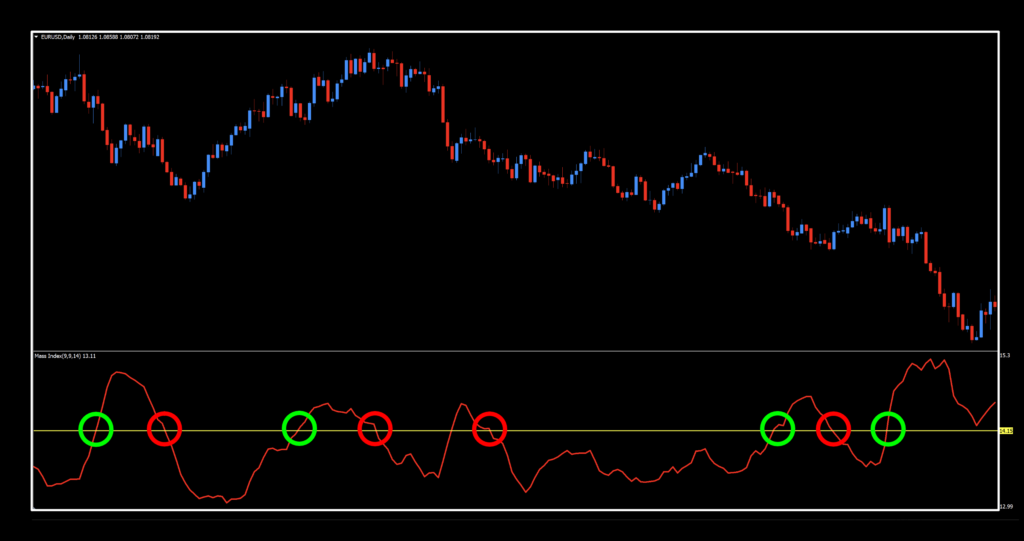
Examining these signals, it appears that some of them are quite late. It should also be noticed that the mid-line value changes as well and needs to be updated in the settings.
A Saga of Data
If you’re new to these studies, we recommend looking at some older blogs to understand how we conduct our testing. Below is the data from our testing.
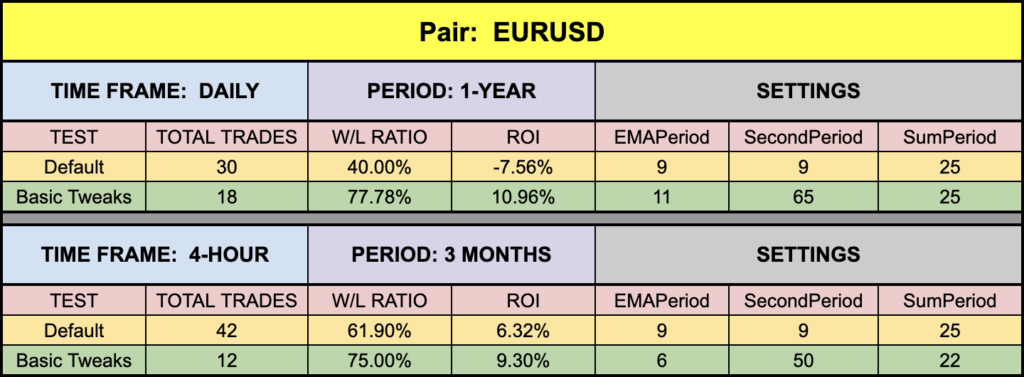
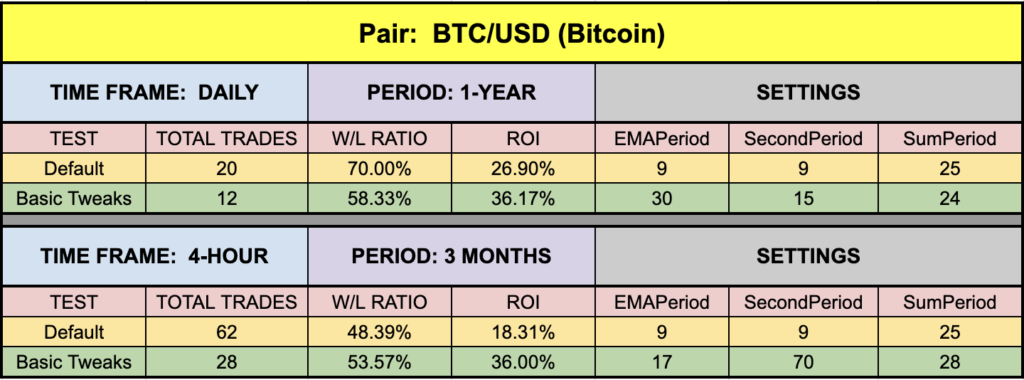
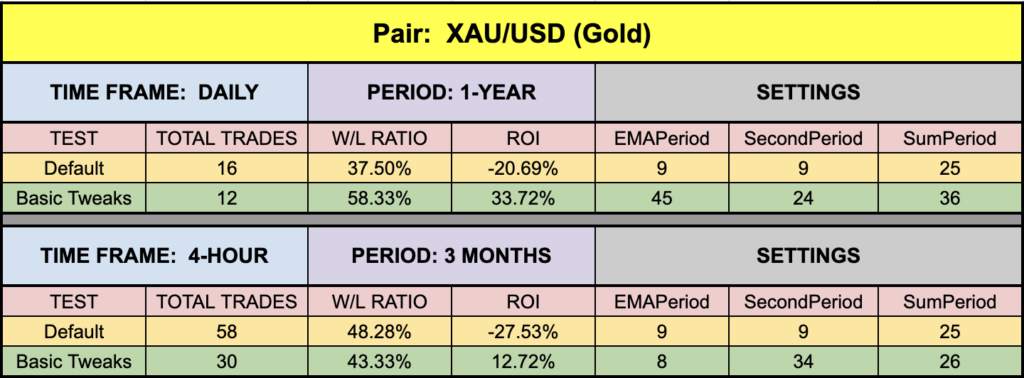
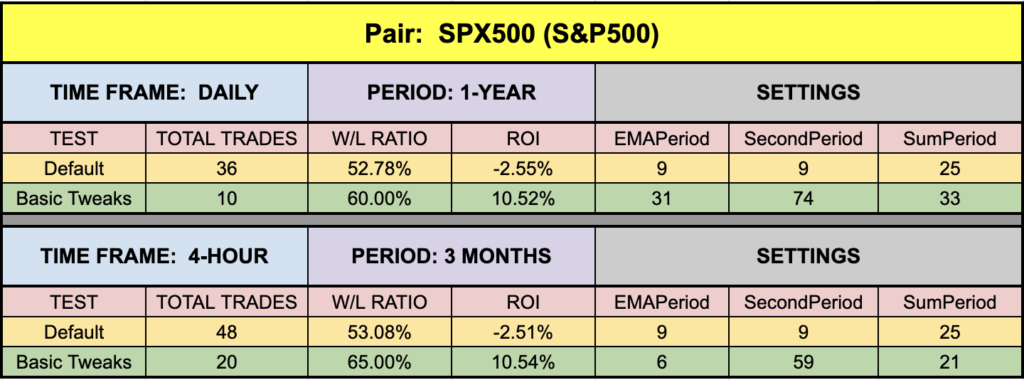
Yowza!
Results here were pretty good all around. Even the EUR and SPX500 did much better. This one has some promise, so take it out for a spin, or at least kick the tires. Remember, we don’t post the worst results nor the best because we’re just demonstrating that these indicators can be made better. You need to put in the work and forge your own path to success. You CAN do this.
Resources
You can get the indicator from the on-line library for free. When you’re ready to get it, click, HERE. Also, be sure to subscribe to the Stonehill Forex YouTube channel for the technical analysis videos. Sign up for the Advanced NNFX Course HERE.
Our only goal is to make you a better trader.
*Our published testing results are based on money management strategies employed by the NNFX system and depend on varying external factors, which may be different between individuals and their specific broker conditions. No guarantee, trading recommendations, or other market suggestions are implied. Your results and subsequent trading activities are solely your own responsibility.
BTW — Any information communicated by Stonehill Forex Limited is solely for educational purposes. The information contained within the courses and on the website neither constitutes investment advice nor a general recommendation on investments. It is not intended to be and should not be interpreted as investment advice or a general recommendation on investment. Any person who places trades, orders or makes other types of trades and investments etc. is responsible for their own investment decisions and does so at their own risk. It is recommended that any person taking investment decisions consults with an independent financial advisor. Stonehill Forex Limited training courses and blogs are for educational purposes only, not a financial advisory service, and does not give financial advice or make general recommendations on investment.

